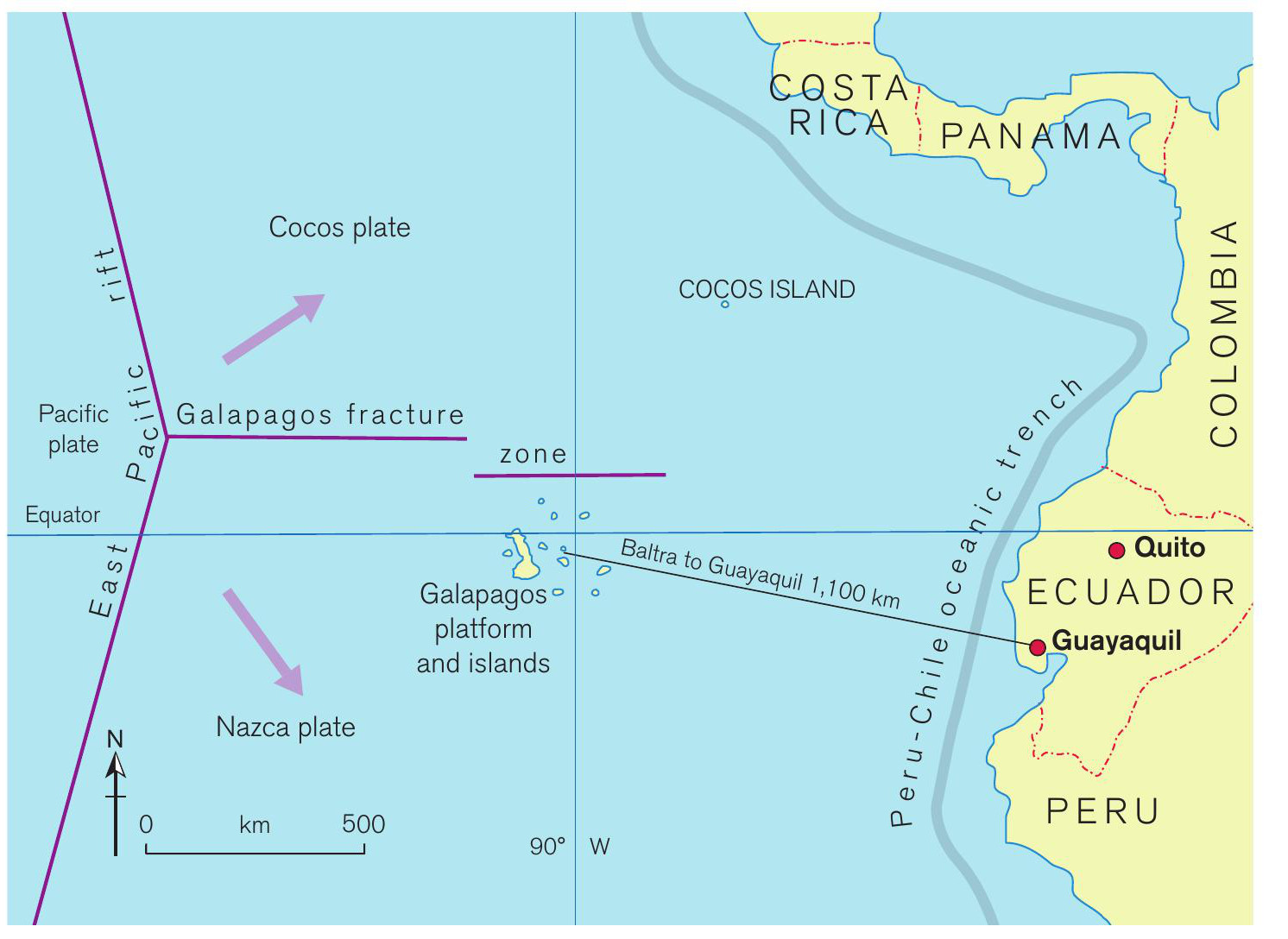
The geographical isolation of Galapagos has ensured its physical and ecological uniqueness. Movement of the Nazca plate over a geological hotspot over eons of time has led to the growth of volcanic islands, with peaks of up to 1,707 metres (Figure 1). Here on the equator cold water currents create huge fields of algae supporting an incredible range of wildlife. As the islands slowly drift east (owing to plate tectonics) they are gradually eroded and eventually disappear below the waves. Over a long period of time the isolation of the islands has allowed flora and fauna to evolve into new (endemic) species unique to the Galapagos, as Charles Darwin eventually realised.
Darwin visited the Islas Encantades (Enchanted Islands), as they were then known, on board HMS Beagle commanded by Captain Fitzroy in October 1835. He stayed almost 5 weeks, collected a great number of specimens and made many observations. He wrote, ‘The natural history of the region is eminently curious’.
Your organisation does not have access to this article.
Sign up today to give your students the edge they need to achieve their best grades with subject expertise
Subscribe




